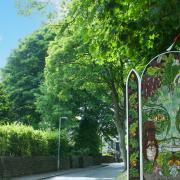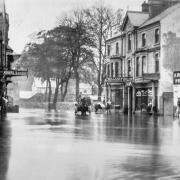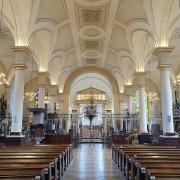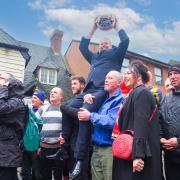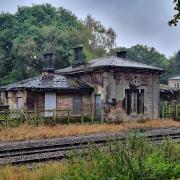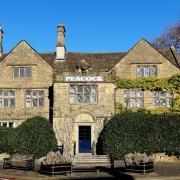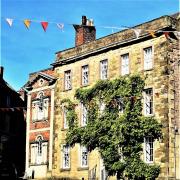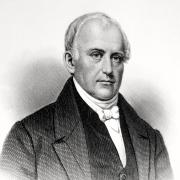The story of the imposing 19th century county hall in Matlock, which now houses Derbyshire County Council, is a varied and interesting one. Mike Smith charts its history and assesses what the future may hold
After becoming seriously ill during his honeymoon in Switzerland, in 1847, John Smedley, the Derbyshire industrialist, was understandably anxious to find a cure for his health problems.
Eventually, he decided to try hydrotherapy, a procedure that was gaining favour at that time as an effective method of treating all manner of diseases and complaints.
Accompanied by his wife, Caroline, Smedley spent nine weeks at Dr William Macleod’s hydropathic centre at Ben Rhydding, near Ilkley, followed, in the next year, by a further period of three months.
Smedley’s water cures
Convinced that these extended spells of hydrotherapy were responsible for the marked improvement in his health, Smedley decided to offer ‘water cures’, free of charge, to the workers at his factory at Lea Mills, near Matlock.
Instead of subjecting his employees to the harsh ‘cold water treatment’ he had endured at Ben Rhydding, he provided them with a ‘mild water cure.’
In 1853, with the number of people seeking his water cure having escalated well beyond members of his work force at Lea Mills, Smedley acquired Alexander’s Cottage, an 11-room property on Matlock Bank, which had been rented by Ralph Davis, one of Smedley’s former trainees, who had developed a keen interest of his own in hydrotherapy.
With the additional purchase of a few neighbouring buildings, Smedley was able to open his first commercial hydro on Matlock Bank in 1859.
By 1867, the original buildings had been replaced by a 76-bedroom block, allowing 2,000 patients to be accommodated annually.
This 11-bay, castellated building, standing commandingly on the higher slopes of Matlock Bank, remains to this day as a distinctive presence.

Additions
After Smedley died in 1874, a limited company took over the hydro, which became so successful that the new managers felt able to extend the building and add new facilities.
The first addition, constructed in 1881, was an imposing entrance hall and a very grand staircase, made even grander one year later by insertion of a fabulous stained-glass window.
The hydro was then virtually doubled in size by the construction of a new eastern section, which featured a palatial dining room. This wing differs markedly in external appearance from the castellated western wing, to which it is attached.
Described by Nikolaus Pevsner as being ‘Italo-Frenchy’ in style, the additions made after Smedley’s death include a massive tower that surmounts projecting bays, which have external walkways and balconies overlooking colourful terraced gardens. The writer Henry Thorold labelled this part of the hydro as looking like ‘an enormous seaside hotel’.
Yet further additions included a new northern block, accessed by a high-level bridge over the road now known as Smedley Street, and an incredibly tall chimney, built in 1894 to service a new boiler house.
This remarkable structure still dominates the top of Matlock Bank, as though it were an Italian campanile.

A new ambience
However, the most attractive addition came with the erection, in 1900, of an all-glass Winter Garden, located just beyond the original castellated block.
This giant, flower-decked, conservatory-like building not only introduced yet another distinctive architectural element to what was already a ‘marriage of styles’, but also symbolised a new ambience at the Hydro.
Whereas patients had been banned from smoking, drinking alcohol and dancing in Smedley’s era, guests were now experiencing the sort of atmosphere they would have expected to find in a large hotel, with concerts, theatricals, games and dancing being provided.
A brochure produced in 1932 even boasted: ‘Many who have wintered in the Riviera, Egypt, Algiers, the Canaries or Madeira are now expressing a preference for Smedley’s.’
Potential visitors who might have been deterred by the steep climb from Matlock Station to the hydro were relieved to find the provision of a cable tramway, which operated from 1893 to 1927.
Ascending an 18% gradient, the tramway was one of the steepest in the world to run on a public road.

New medicines and new ways of working
The popularity of hydropathic centres declined rapidly when new medicines became available. Smedley’s Hydro closed in the 1950s and the entire range of its buildings was acquired by Derbyshire County Council to serve as its new headquarters.
Seventy years on, the introduction of homeworking during the Covid pandemic, and the continuing popularity of this method of working, has not only meant that much of County Hall is underused, but has bought into question whether the council can afford to maintain such a vast complex.
Currently, expressions of interest are being sought from investors and developers who might be willing to share these remarkable buildings with the council, perhaps to create spaces for local businesses, maybe to provide new homes or to use the former hydro as a venue for a world-class hotel that might recreate the glamour of those times when Smedley’s attracted celebrities like Sir Thomas Beecham, Robert Louis Stevenson and Ivor Novello.
WHILST YOU ARE THERE
Although the days when people came to Matlock from many parts of the country for hydrotherapy treatment are long gone, there are other good reasons to visit the Derbyshire town.

Hall Leys Park
Recognised as one of the best parks in the country, Hall Leys Park has stunning floral displays and a host of facilities for young and old, including a boating lake, a children’s play area, a skateboard park, a miniature railway, tennis courts, a bowling green, a putting green, and a café.
Peak Rail
To take a nostalgic ride back in time through the Derbyshire countryside, board one of the vintage trains, either steam or diesel, which run between Matlock Platform 2 and Rowsley South Station.
From early December until Christmas Eve, Santa Specials operate, when adult passengers are offered wine and a mince pie and their children are given sweets and a small gift.

Shop until you drop
Matlock’s shopping streets radiate like the spokes of a wheel from the roundabout at Crown Square, which is topped by a gleaming stainless-steel crown.
Flowers, jewellery, furniture, gifts and antiques figure prominently among the goods available. And, to avoid dropping from exhaustion, call in for a refreshing drink at one of the coffee shops.
Derbyshire Record Office
The office has valuable resources and archives in the form old newspapers, maps, wills, advertisements, records of businesses and auctions.
Free computer access allows you to research records of baptisms, marriages and burials from 400 parishes – a goldmine for people who enjoy digging into family history.








